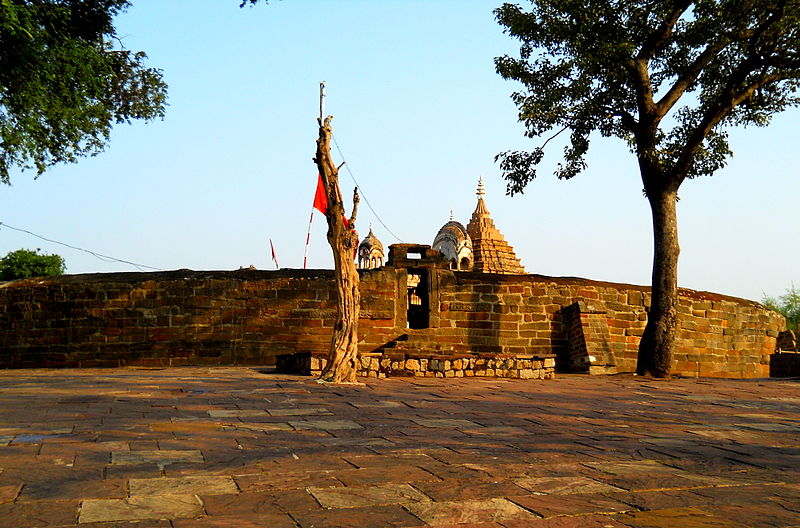Bhedaghat Chausath Yogini Temple (Gauri-Shankar temple), Madhya Pradesh

Address
Bhedaghat Chausath Yogini Temple (Gauri-Shankar temple), Bhedaghat, Madhya Pradesh 483053
Deity
Shiva Amman: Durga
Introduction
The Chausath Yogini Temple in Bhedaghat, Madhya Pradesh, is a unique yogini temple in India, featuring shrines for 81 yoginis instead of the more common 64 yoginis. This deviation from the norm signifies a royal origin, implying that the temple was founded by a king.
Puranic Significance:
- The Chausath Yogini Temple in Bhedaghat is renowned for its impressive scale and architecture. It is one of the largest circular yogini temples, measuring approximately 125 feet in diameter.
- The temple features a covered walkway with 81 cells dedicated to yoginis along the inside of its circular wall. Three entrances, two to the west and one to the southeast, remain open.
- In the center of the courtyard, a later shrine was added, and the temple was converted into a Gauri-Shankar temple. The central deities, originally Bhairava or dancing Shiva, were relocated during this renovation, which took place in 1155 AD.
- The temple was originally constructed in the early 11th century by King Yuvaraja II, a ruler from the Kalachuri dynasty of Tripuri. The town of Tripuri was located just four miles away, across the Narmada River from the temple.
- The temple was known as Bhairavaghat due to its association with yoginis, which typically hold images of Shiva or Bhairava at their center.
- The yoginis represented in this temple are typically associated with female practitioners of yoga and sacred feminine forces. In some interpretations, yoginis were believed to have special powers, including sorcery.
- A fascinating story is connected to the temple’s history, involving Aurangzeb, who attempted to destroy it. Aurangzeb successfully destroyed the images of the yoginis. However, when he tried to destroy the central shrine of Lord Shiva and Parvati sitting on Nandi, he was thwarted by a swarm of honey bees, which he interpreted as a miracle, leading him to abandon his efforts to destroy the temple.
Special Features:
- The temple houses stone images of the yoginis, which were originally finely crafted but have suffered extensive damage over the years.
- Among these images is Kamada, which includes a yonipuja, signifying the worship of the yoni.
- The 81 images include representations of 8 Matrikas or mother goddesses from an earlier period. One of them, Chandika, is depicted riding a human corpse in a cremation ground.
- Three niches within the temple are now occupied by male deities, including a dancing Ganesh and two Shiva Lingas. These male deities were likely installed during the later conversion of the temple into a Gauri-Shankar temple.
- Unfortunately, many of the yogini images within the temple have been vandalized, and most of them have suffered damage to their faces. Some of the images remain only from the waist down.
The Chausath Yogini Temple in Bhedaghat stands out not only for its architectural significance but also for its distinctive features and the historical events surrounding it. It offers a glimpse into the rich and complex history of religious architecture in India.
Century/Period/Age
11th Century AD
Managed By
Archaeological Survey of India (ASI)
Nearest Bus Station
Bhedaghat
Nearest Railway Station
Bhedaghat
Nearest Airport
Jabalpur




